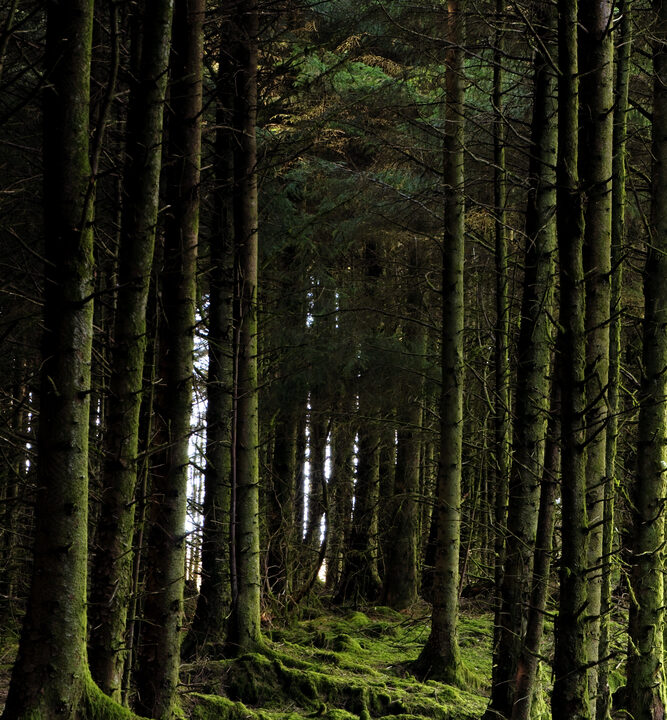The timing of thinning forestry for the first time depends on a number of factors, according to Padraig Egan, General Manager with SWS Forestry.
He said that tree species, site productivity and geographic characteristics of the site are all key determinants in when and how first thinning should take place.
Anyone who planted forestry in the mid 1990s should be looking at thinning, he said, as a good-yielding Sitka spruce site would be thinned at between 15 and 18 years of age.
Plantations from the 1990s were predominately planted with Sitka spruce as well as hardwoods such as, Ash, Oak and Sycamore, Maurice Ryan, Timber and Marketing Manager with Greenbelt says.
According to Maurice, it is important that the first thinning takes out the lightest and weakest timber, which allows the larger and stronger trees to grow into the space left and this leads to more light made available.
Thinning allows value to be added to the clear fell crop, as it adds greater volume and diameter to the crop, according to Maurice.
If the external trees are at a height of 8-10m or 25-30ft tall the plantation could be ready for thinning, Maurice says.
In some parts of the country, in particular along the south-west, thinning may need to be done at year 14-16 and on a three-year cycle, according to Nicholas Cotter, Director and Harvesting Manager with Mid Western Forestry.
“The primary reason for thinning is not to get so much per tonne but as a crop management activity,” he said.
Visual Assessment
The 10-year management plan, according to Maurice Ryan, will give a good indication on paper when the plantation should be thinned.
However, viewing the plantation, Maurice says, from an ariel view or Google or from the field beside it and looking at the external trees will give an idea if it it is ready for thinning.
He advises to get an idea of the situation on the ground by walking around the forestry through the inspection paths.
“To get access to the forestry without an inspection path, cut branches and this will give a good overview of the plantation if you walk through diagonally.”
He says it may not be easy to do and could cost about €0.30c/m to cut through it.
According to Padraig Egan, it is important to ensure that the required number of stems are removed so that the potential growth rate is maximised by the remaining stock.
Too much removed at this stage will have a detrimental effect on the final productivity of the forest at clearfell stage, he says.
Planning
According to Maurice Ryan, many plantations were established in more remote areas on farms and there was little consideration of how it would be accessed in 17 or 20 years time.
With this in mind he says there is a grant for roads available to access these plantations, the grant covers the building of roads of 20m p/ha planted with a cost of €50/ac.
Once access to the forest is established, the next step before thinning begins is to arrange the applications for general felling license and a license to allow the timber to be harvested, Maurice says.
Forestry management companies can carry out the preliminary works such as getting felling licences, applying for road grants, constructing roads, and then harvesting and selling the timber to the mill on behalf of the client, Padraig Egan says.
Pricing
Nicholas Cotter says that a standing price (a price before any cutting is undertaken) per category of tree is the best option when getting prices for the plantation.
A flat rate, he said, is like inviting a cattle dealer into the yard and receiving a price per head for everything cows, calves etc but a price per category is like getting one price for calves and another for cows.
Market
The market for thinnings depends on assortments and size of the timber product, according to Padraig Egan.
The SWS Forestry man says that the larger logs go to pallet production mills, the smaller material goes into stake production for the fencing market, and the remaining poorer quality goes into the board mills.
The majority of harvested timber in Ireland is exported to the UK, according to Maurice Ryan, as the UK does not have facilities to produce what we do.
“About 82% of roundwood that’s processed in sawmills goes to the UK and is c16 grade, which is used for light commercial timber use such as mdf or odf.”
Irish timber supplies 5-6% of UK timber demand, Maurice says.
At the moment the market is steady with pulp and saw logs remaining largely the same although pallet has slipped a bit, according to Nicholas.
He says that saw logs at the moment are making €75/t road side.
